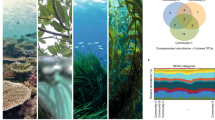Abstract
Emerging methodologies can be used to provide a strong basic understanding of the diversity of microbial behavior and interactions. However, these new methods should be thoroughly and rigorously validated under controlled conditions before being extended to uncontrolled field conditions. Data based on novel approaches are likely to provide insights that are not easily related to existing information based on conventional methodologies. As an example, measurements of the ribosomal RNA (rRNA) content of bacteria show similar spatial patterns as measurements of thymidine incorporation into DNA and leucine incorporation into protein. However, the spatial patterns are not identical, and these parameters are not equally intercorrelated nor equally predictable from basic oceanographic data. Therefore, rRNA content measurements provide a new dimension of information that can be used to explore the relationship of bacteria to their environment, complementing the information obtained from conventional methods.
Similar content being viewed by others
References
Lee S, Fuhrman J (1991) Spatial and temporal variation of natural bacterioplankton assemblages studied by total genomic DNA hybridization. Limnol Oceanogr 36:1277–1287
Author information
Authors and Affiliations
Rights and permissions
About this article
Cite this article
Kemp, P.F. A philosophy of methods development: The assimilation of new methods and information into aquatic microbial ecology. Microb Ecol 28, 159–162 (1994). https://doi.org/10.1007/BF00166804
Issue Date:
DOI: https://doi.org/10.1007/BF00166804




